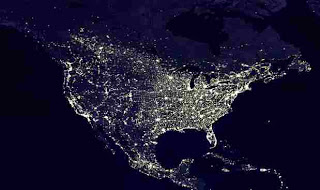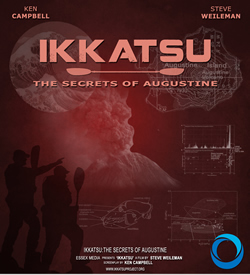That modern glow
Light pollution is a major issue here in the first part of the 21st century, although it rarely gets the attention and effort that is regularly put into combating other forms of pollution. It seems, at first glance, to be more esoteric and less important than declining fish stocks, unclean air and water and the problem of where to store nuclear waste. How important is it, really, that human beings are able to see the stars? What’s the big deal?
I can think of a few reasons, right off the top of my head: Pollution is pollution, regardless of the context. Light that is directed into the sky, as in the photo above, is energy wasted, pure and simple. Excessive man-made light affects not only the circadian rhythms of the people who live within its glow, but many of the plants and animals as well.
It turns out that the Olympic peninsula, especially the western portion of it, is a good place to see the night sky the way it was meant to be. That’s according to a few of the web sites dedicated to the preservation of a naturally dark night sky, but honestly, I didn’t need any internet validation for that. Though the stars are often obscured by clouds here in the Pacific Northwest, on those sweet, clear nights out near La Push or the hot springs, outside of Sekiu or up the Elwha, the night sky is capable of taking your breath away. The Milky Way bisects the heavens in a swath of glittering stars, and from horizon to horizon, balls of gas and energy beam in from impossible distances, reminding anyone who sees them of their place in the universe.
Streetlights never do that, and that’s why it’s a big deal.











